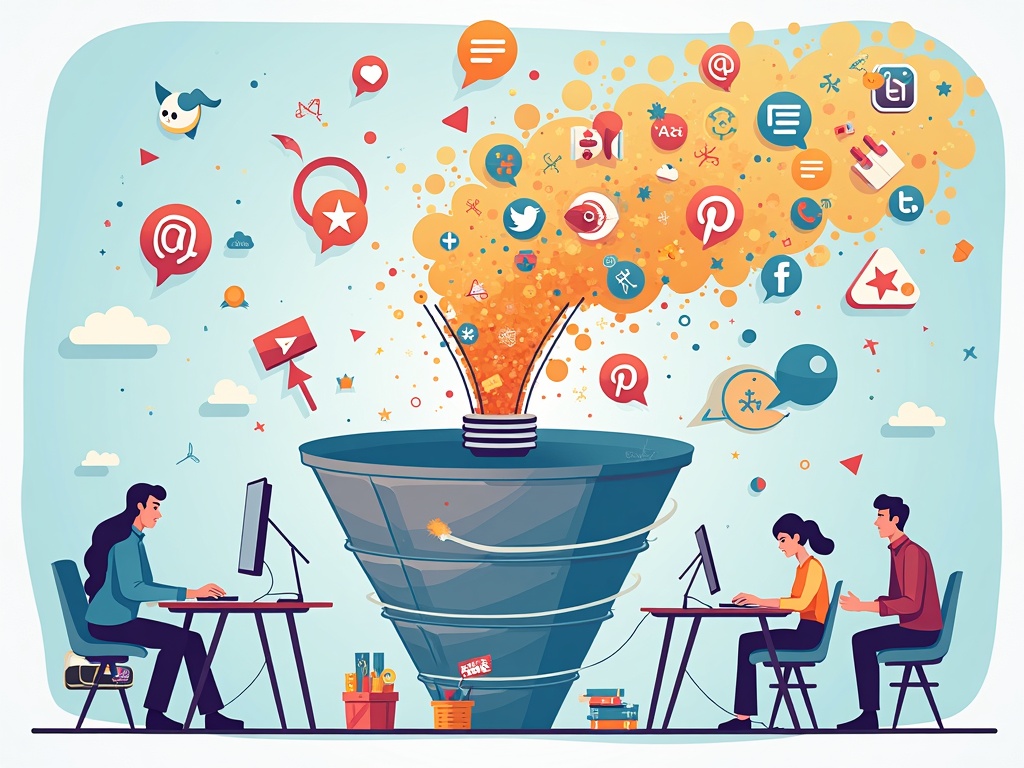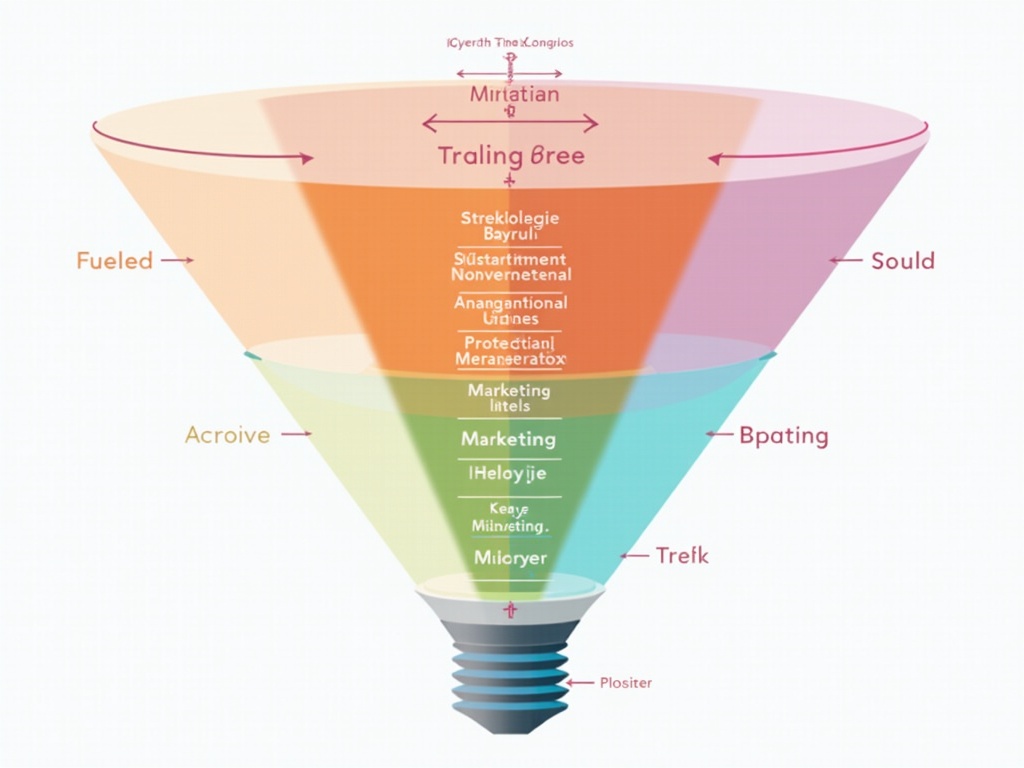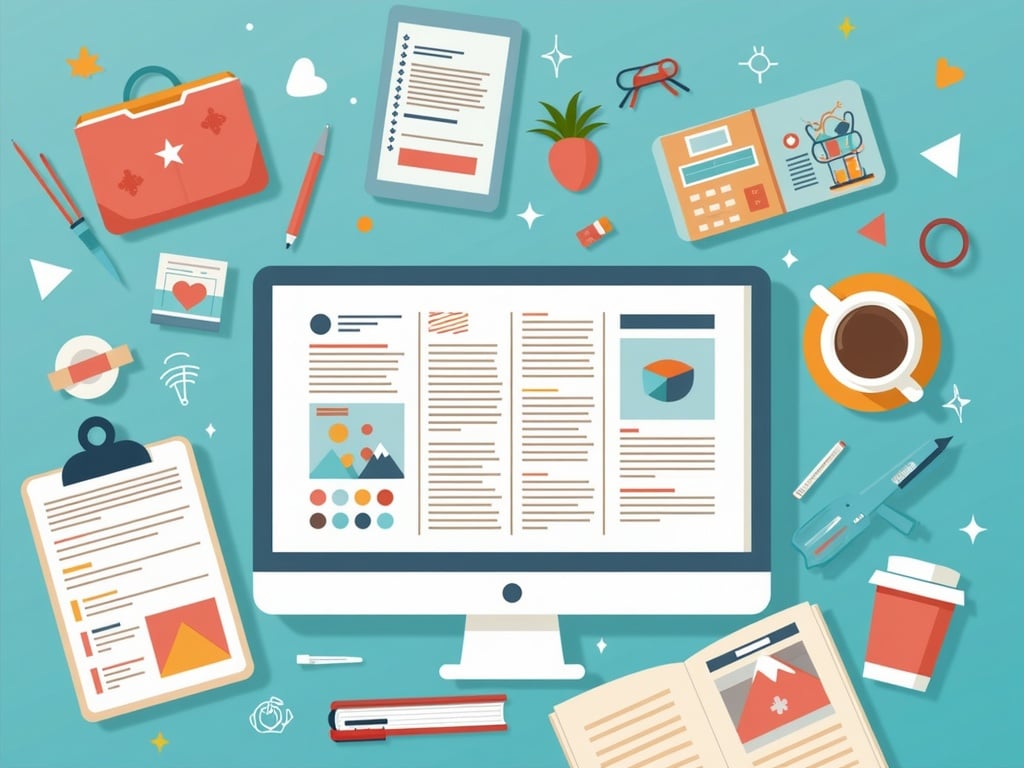What is a Marketing Funnel Explained Simply?
Imagine you’re casting a wide net, hoping to catch a specific type of fish. You don’t expect to catch every single fish in the sea, right? Some will be too small, some will be the wrong species, and some will simply swim away. A marketing funnel works on the same principle. It’s a strategic process that guides potential customers through a series of stages, from initial awareness to becoming loyal, repeat buyers. Think of it as a carefully crafted journey that turns curious onlookers into paying fans.
Decoding the Marketing Funnel: A Simple Explanation
At its core, a marketing funnel is a visual representation of the customer journey. It illustrates the different stages a person goes through, from first learning about your business to finally making a purchase (and hopefully, becoming a long-term customer). It’s called a funnel because, at each stage, some people drop off, leaving fewer and fewer as they move closer to becoming buyers. The wider the top of the funnel, the more people you’re attracting; the narrower the bottom, the more qualified and ready-to-buy those remaining prospects are.
Why Bother with a Marketing Funnel?
Why not just blast your message to everyone and hope for the best? Well, that’s like throwing spaghetti at the wall and seeing what sticks – inefficient and messy. A marketing funnel provides several key benefits:
- Increased Efficiency: Focus your marketing efforts on the most promising leads.
- Improved Conversion Rates: Nurture leads with targeted content that addresses their specific needs at each stage.
- Better Customer Understanding: Gain insights into customer behavior and preferences.
- Predictable Sales Growth: By understanding the funnel, you can forecast sales and identify areas for improvement.
The Classic Stages of a Marketing Funnel (and What They Really Mean)
While different models exist, the most common marketing funnel consists of these stages, which we’ll break down in plain English:
1. Awareness (The ‘Hey, I Exist!’ Stage)
This is where potential customers first become aware of your brand, product, or service. Think of it as sparking their interest. How do you do this? Through various channels:
- Social Media: Engaging posts, eye-catching ads, viral content.
- Blog Posts: Informative and helpful articles that solve problems.
- Search Engine Optimization (SEO): Ranking high in search results for relevant keywords.
- Advertising: Online ads, print ads (yes, they still exist!), and even good old-fashioned word-of-mouth.
Goal: To attract as many relevant people as possible to the top of your funnel.
2. Interest (The ‘Tell Me More’ Stage)
At this stage, people are intrigued and want to learn more. They’re actively researching and comparing options. Your job is to provide valuable information that keeps them engaged.
- Lead Magnets: Free ebooks, checklists, webinars, or templates offered in exchange for contact information.
- Email Marketing: Sending informative and engaging emails that nurture leads.
- Case Studies: Demonstrating the success of your product or service with real-world examples.
- Product Demos: Showcasing the features and benefits of your offering.
Goal: To educate leads and build trust, moving them further down the funnel. A strong interest stage makes effective use of tools, like lead magnets.
3. Decision (The ‘Should I Buy?’ Stage)
This is where potential customers are seriously considering making a purchase. They’re weighing their options and looking for reasons to choose you over the competition.
- Testimonials: Social proof from satisfied customers.
- Reviews: Positive reviews on platforms like Google, Yelp, or industry-specific sites.
- Special Offers: Discounts, coupons, or limited-time deals.
- Free Trials: Allowing potential customers to try your product or service before committing.
Goal: To convince leads that your product or service is the best solution for their needs.
4. Action (The ‘Yes, I’ll Take It!’ Stage)
Finally, the moment of truth! The lead makes a purchase and becomes a customer. But the funnel doesn’t end here.
- Seamless Purchase Process: Easy and secure checkout process.
- Excellent Customer Service: Providing prompt and helpful support.
- Onboarding: Guiding new customers through the initial setup and use of your product or service.
Goal: To make the purchase process as smooth as possible and ensure customer satisfaction.
Beyond the Purchase: Retention & Advocacy (The ‘Keep Them Coming Back’ Stage)
The most successful businesses understand that acquiring a new customer is often more expensive than retaining an existing one. That’s why the funnel extends beyond the initial purchase to focus on customer retention and advocacy.
Retention (Turning Customers into Repeat Buyers)
- Loyalty Programs: Rewarding repeat customers with exclusive benefits.
- Personalized Communication: Tailoring your messaging to individual customer preferences.
- Ongoing Support: Providing continuous support and assistance.
- Feedback Collection: Actively seeking customer feedback and using it to improve your products or services.
Goal: To create loyal customers who continue to buy from you.
Advocacy (Turning Customers into Brand Ambassadors)
- Encouraging Reviews and Referrals: Asking satisfied customers to leave reviews and refer their friends.
- Creating a Community: Fostering a sense of community among your customers.
- User-Generated Content: Encouraging customers to create and share content related to your brand.
Goal: To turn customers into enthusiastic advocates who spread the word about your business.
Building Your First Marketing Funnel: A Step-by-Step Guide
Ready to put this into practice? Here’s a simplified guide to creating your own marketing funnel:
- Define Your Target Audience: Who are you trying to reach? What are their needs, pain points, and goals?
- Map Out the Customer Journey: How do potential customers currently interact with your brand? What steps do they take before making a purchase?
- Create Content for Each Stage of the Funnel: Develop content that addresses the specific needs and interests of your audience at each stage (awareness, interest, decision, action, retention, advocacy).
- Choose Your Channels: Which marketing channels will you use to reach your target audience at each stage? (e.g., social media, email marketing, SEO, advertising).
- Track and Measure Your Results: Use analytics to track the performance of your funnel and identify areas for improvement.
- Optimize and Iterate: Continuously test and refine your funnel based on your data. What’s working? What’s not?
Common Marketing Funnel Mistakes to Avoid
Even with a solid plan, it’s easy to stumble. Here are some common pitfalls to watch out for:
- Ignoring the Customer Journey: Failing to understand how customers actually interact with your brand.
- Creating Irrelevant Content: Producing content that doesn’t resonate with your target audience.
- Lack of Follow-Up: Failing to nurture leads who have expressed interest in your product or service.
- Poor Customer Service: Providing a negative customer experience that drives people away.
- Not Tracking Your Results: Failing to measure the performance of your funnel and identify areas for improvement.
The Marketing Funnel: Your Roadmap to Business Growth
Understanding and implementing a marketing funnel doesn’t have to be complicated. It’s about guiding potential customers on a journey, providing value at every step, and building lasting relationships. By focusing on the customer experience and continuously optimizing your funnel, you can transform curious onlookers into loyal, repeat buyers and unlock sustainable business growth.





